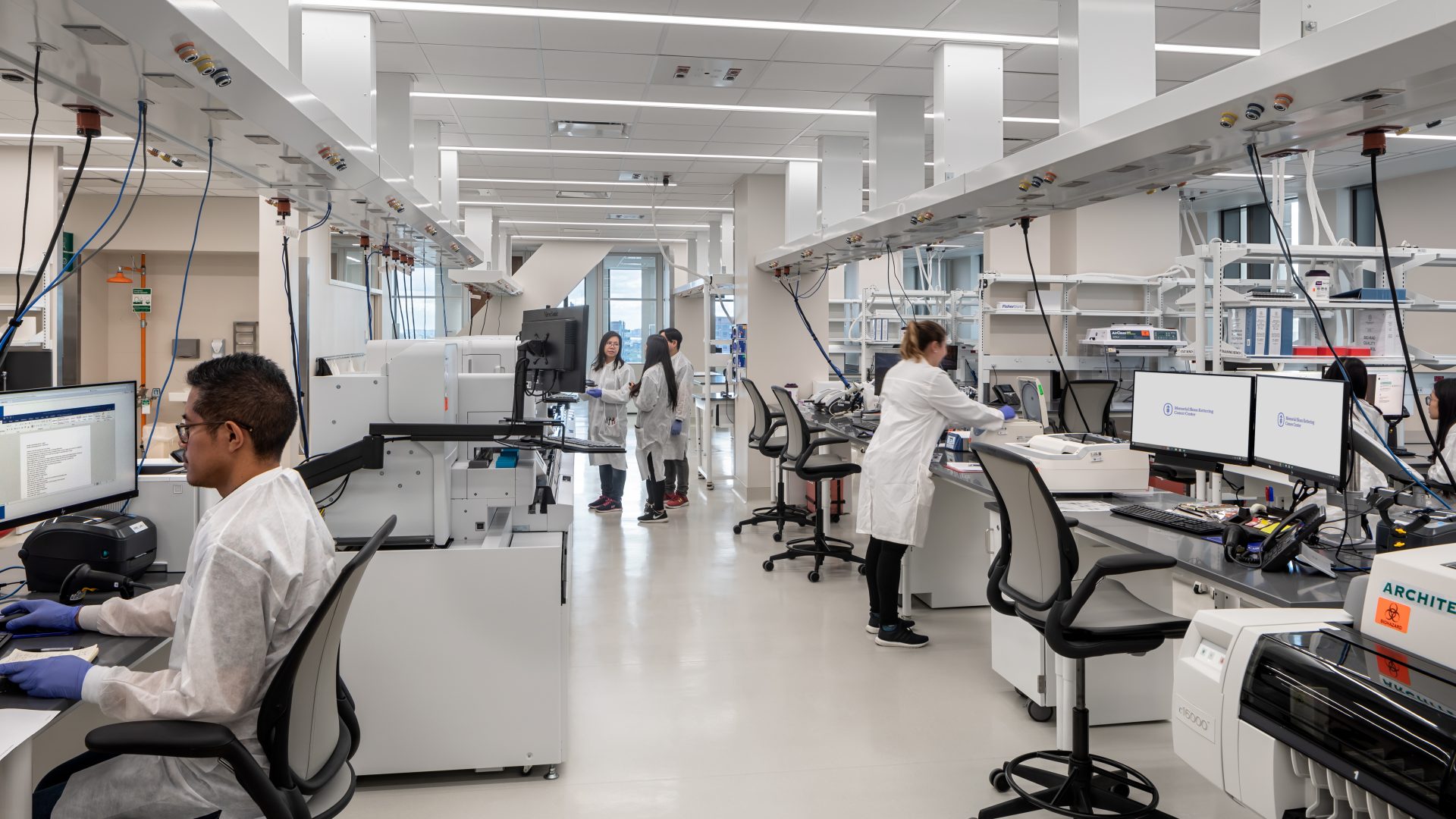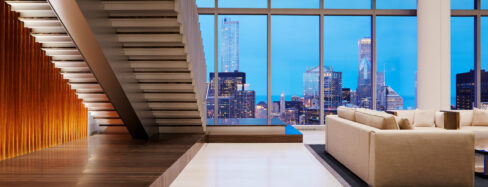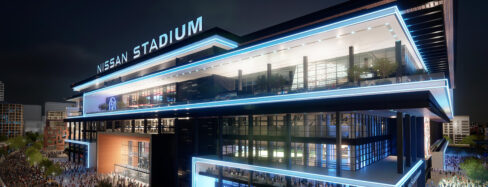Now more than ever, lighting quality is at the forefront of modern office and lab lighting design. It is no longer just about putting footcandles on a task surface, it is the careful balance and consideration of daylighting, finishes, and the focus on user experience. A well-crafted lighting design helps with productivity, stimulates the mind, and inspires employees on a daily basis.
Design for work environments should carefully consider the impact of daylighting first and supplement with electric lighting when needed. Locating open workstations, lab benches and desks closest to glazing is vital, as it gives users natural light access for most of their workday, which can help promote productivity. Having more exposure to daylight, especially in the early morning hours, can help with circadian rhythm synchronization. However, the exact orientation of workstations to windows is critical. Because most people are working on screens all day, which are typically self-luminous, glare from daylight could become an issue as the sun is brighter than screens.
This leads to another major design consideration when lighting for offices and labs – glare. Glare is an issue for both daylighting and electric lighting. Specifying shades or blinds (either manual or electric) may be necessary depending on which façade workspaces are oriented towards. Contrary to popular belief, darker shade finishes are preferred because lighter, white fabrics tend to create even more glare. Shades can be deployed either manually or automatically, ensuring people are comfortable throughout all hours of the day.
Trends in electric light sources have pushed manufacturers to create smaller, thinner profiles (down to 1” or less) while maintaining similar outputs to their larger counterparts. While they look minimal and sleek, these lights can cause eye strain and fatigue, particularly for older generations. It is important to consider the brightness of the lens when selecting fixtures, especially if fixtures will be in direct view of employees while they are working. The use of louvers or baffles on fixtures can help mitigate glare. These types of accessories have seen a resurgence since the linear fluorescent days. If smaller fixtures are desirable, perhaps specify a lower output and consider decreasing spacing between fixtures. Manufacturers are also more willing to fine-tune light outputs, which can help with glare control and overall wattage expenditure.
One of the most efficient lighting solutions for office and lab environments is specifying separate task lighting versus ambient lighting solutions. In these environments, employees have their own task lights, enabling overhead light levels to generally be lower. This is extremely important when it comes to lab benches, as they generally require very high light levels. This combination offsets the overhead lighting by saving on overall wattage expenditure. With our energy codes becoming more and more aggressive, individually controllable task lights are paramount to driving our lighting wattage down.
Task lights also provide greater flexibility to employees, giving them the ability to finetune and control their own environment. Because occupants have different visual needs and vary in age, giving them the ability to customize their preferences allows for a more comfortable workstation. Depending on the task light selected, users have the ability to control not only light level (via dimming), but even the color/CCT (whiteness) of the light.
While energy goals and light levels are important, overall aesthetic and employee experience is driving many of our lighting designs in the office world. More and more of our clients are desiring less corporate-feeling spaces in exchange for a space that feels warm and inviting, similar to their home. We are seeing shifts from long continuous linear light fixtures to oversized decorative pendants, pops of sparkle and the use of bold finishes and colors. No longer is it about direct/indirect fixtures, but it is considering the “unexpected” and making staff more comfortable.
In lab environments, the focus is more on actual lighting levels as tasks generally require brighter, more even environments on surfaces. While lab bench lighting is, again, critical, we’re seeing labs become more flexible, which can present some unique challenges. Adjustable shelving is becoming more prevalent and requires modified mounting, such as magnets, to become a key piece for user flexibility. Providing varying lighting solutions in open lab stations, circulation and collaborative zones enables more creativity in fixture selection, more finite zone control and provides flair and design to an otherwise traditionally monotonous feeling environment.
Though lighting quantity is highly important, the quality of the lit environment is at the forefront of design in lab and office spaces. A comfortable, illuminated space where end users are productive, inspired and content is the ultimate sign of a successful lab or office lighting design.


